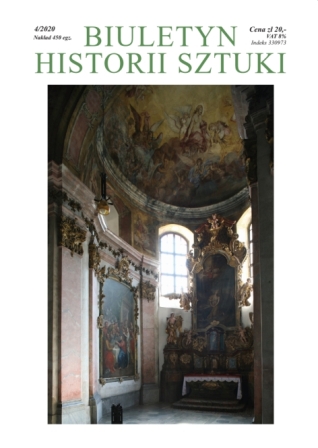„Budowle służące zabawom przyjemnym a tem samem przy wodnej kuracji bardzo pożytecznym”. O drewnianych domach zdrojowych, teatrach i estradach w polskich uzdrowiskach w XIX i na początku XX wieku
‘Buildings Serving Pleasant Pastime, thus a Useful Complement to Water Therapy.’ On Wooden Spa Houses, Theatres, and Stages in Polish Resorts in the 19th and Early 20th Century
Author(s): Grażyna RuszczykSubject(s): Theatre, Dance, Performing Arts, Music, Architecture, Visual Arts, Recent History (1900 till today), 19th Century, History of Art
Published by: Instytut Sztuki Polskiej Akademii Nauk
Keywords: spas; spa architecture; wooden architecture; 19th- and early-20th-century architecture;
Summary/Abstract: In order to meet the expectations of wealthy visitors, who did not only anticipate effective treatment, but also rich cultural and social attractions, spa owners and administrators had to provide different entertainment and fun. With this purpose in mind they would hold shows of theatre companies, concerts, balls, soirees, lectures, etc. Therefore the spa houses raised in resorts featured ball rooms, reading rooms, restaurants, cafes, gaming rooms. Also theatres were built, and stages for music shows were mounted in parks. The paper is dedicated to these very buildings that came from several selected spas considered to be Polish and raised in the territory of the Polish-Lithuanian Commonwealth. On the one hand they are the oldest spa resorts (from the first half of the 19th century), the largest and operating until this very day: Busko, Ciechocinek, Druskienniki (Druskininkai, t. Lithuania), Iwonicz, Krynica, Solec, Szczawnica, and Truskawiec (Truskavets, t. Ukraine), as well as newer ones on the other (from the second half of the 19th century), but well known and still operating today: Zakopane and Połąga (Palanga, t. Lithuania). The paper is focused on wooden structures, since it was them that until the early 20th century determined the architectural landscape of Polish spas. With the majority having been destroyed, they are known only from iconographic materials and descriptions.
Journal: Biuletyn Historii Sztuki
- Issue Year: 82/2020
- Issue No: 4
- Page Range: 601-640
- Page Count: 40
- Language: Polish

